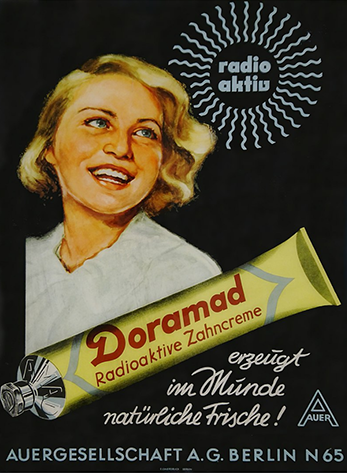About a decade ago I was reading an account of Allied activities in Germany at the tail end of World War 2. The Allies knew that Germany was working on a nuclear program of some sort – there was evidence that it was a nuclear weapons program – and we were trying to find out how far along they were since a Nazi nuclear weapon would have been able to turn the war back in Germany’s favor. Consider, for example, the effect of a nuclear attack against the landing forces on D-Day, or against Russia’s forces as they advanced towards Berlin – or a nuclear weapon arriving over London and Moscow, delivered by V2 rockets with the attacks ordered by a leader with no compunctions about visiting utter destruction upon his foes.
As part of their operations, the Allies came to realize that Germany seemed to be buying up the world’s supply of thorium and they grew concerned that Germany might have found a way to make nuclear weapons out of thorium. It’s not out of the question – the primary isotope of thorium is Th-232 which, if it captures a neutron, will end up as U-233, an artificial isotope of uranium that fissions as easily as the U-235 used in the Little Boy nuclear weapon dropped at Hiroshima. So when Leslie Groves, the general overseeing the Manhattan Project, learned about German thorium purchases, he launched an investigation to find out if the focus on uranium and plutonium had somehow overlooked another viable path to nuclear weapons.
If thorium really did provide such a path then it could be important to the American effort as well. The main reason – and one of the reasons that there are so many proponents of thorium as a fuel for nuclear reactors – is that there is four times as much thorium on Earth as there is uranium and, unlike uranium (in which only one atom in 139 is fissionable), every single atom of natural thorium can become an atom of fissionable U-233. So instead of having to laboriously separate U-235 from U-238, a thorium weapon would only have to bombard Th-232 with neutrons and then chemically separate the resulting U-233. That being said, there were some difficulties in working with this process but if Germany has mastered them, perhaps we could as well. So an investigation was launched.
What they found had nothing to do with nuclear weapons – not even with nuclear energy. Rather, it had to do with cosmetics.
During the first part of the previous century, radium was all the rage, and radium was added to patent medicines, toothpaste, and there was even a line of condoms named “Radium” (although it doesn’t look as though the condoms were impregnated with radium!). A German cosmetics company, understanding that the war was coming to an end, was trying to figure out how to increase their business in peacetime and they hit upon a variation of this trend – if radium could be added toothpaste, why not thorium? So they set out to stock up on thorium for their post-war toothpaste line.

Doramad Radioactive Toothpaste (Doramad Radioaktive Zahncreme) was produced in Germany by Auergesellschaft of Berlin from the 1920s through World War II.
Title: “Doramad Advertisement”, Creator: https://commons.wikimedia.org/wiki/User:Suit, Source: https://commons.wikimedia.org/wiki/File:Doramad_Advertisement.jpg, License: This file is licensed under the Creative Commons Attribution-Share Alike 4.0 International license.
In hindsight, it seems their idea and their imagined product line were both somewhat overly optimistic. Oh – and as far as using the Th-232 → U-233 method for making nuclear weapons…the US (1955), Soviet Union (1955), and India (1998) have all detonated weapons that used U-233 for some or all of the fissionable mass. However, for a number of reasons, U-235 and Pu-239 continue to be the materials of choice for nuclear weapons.